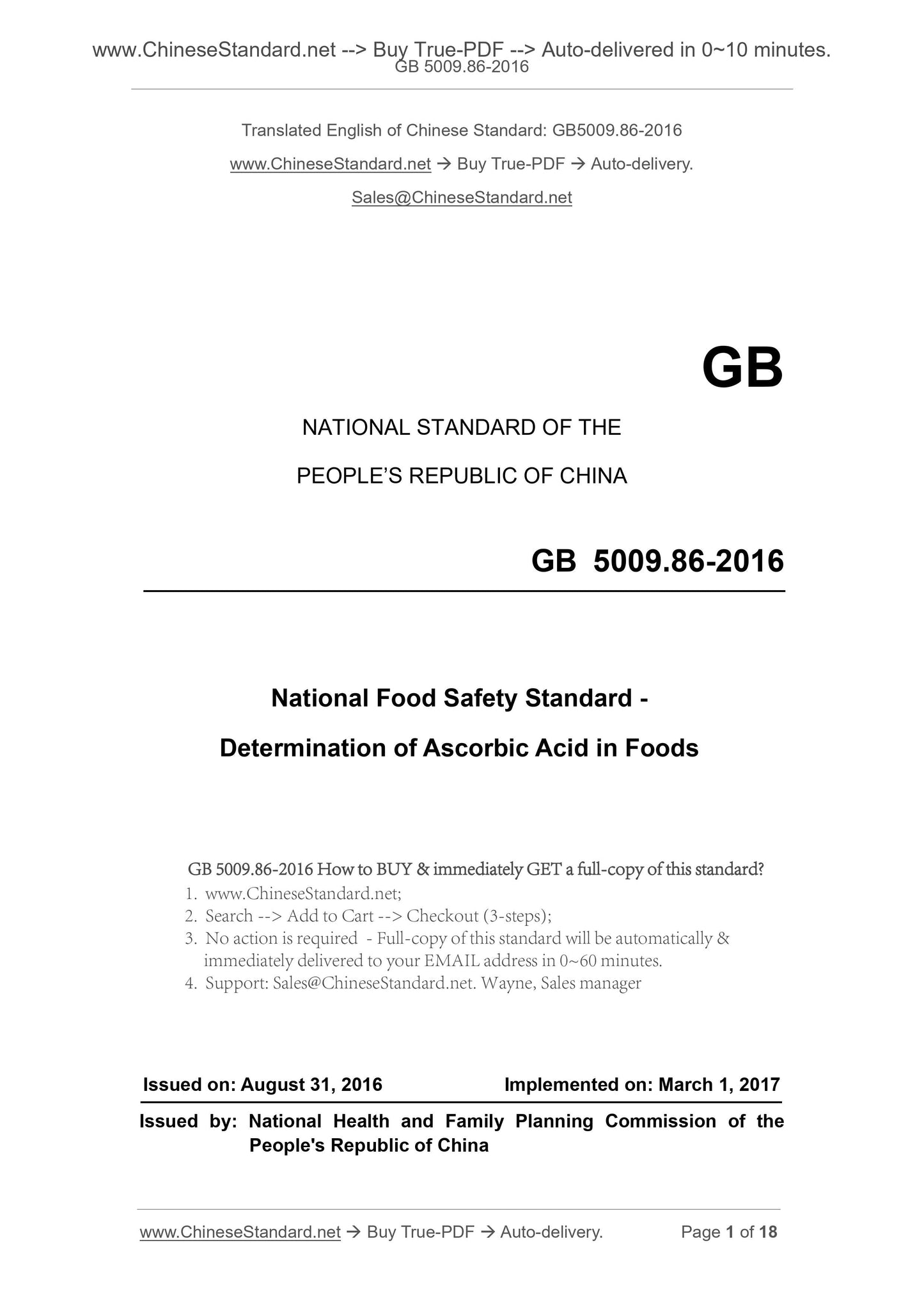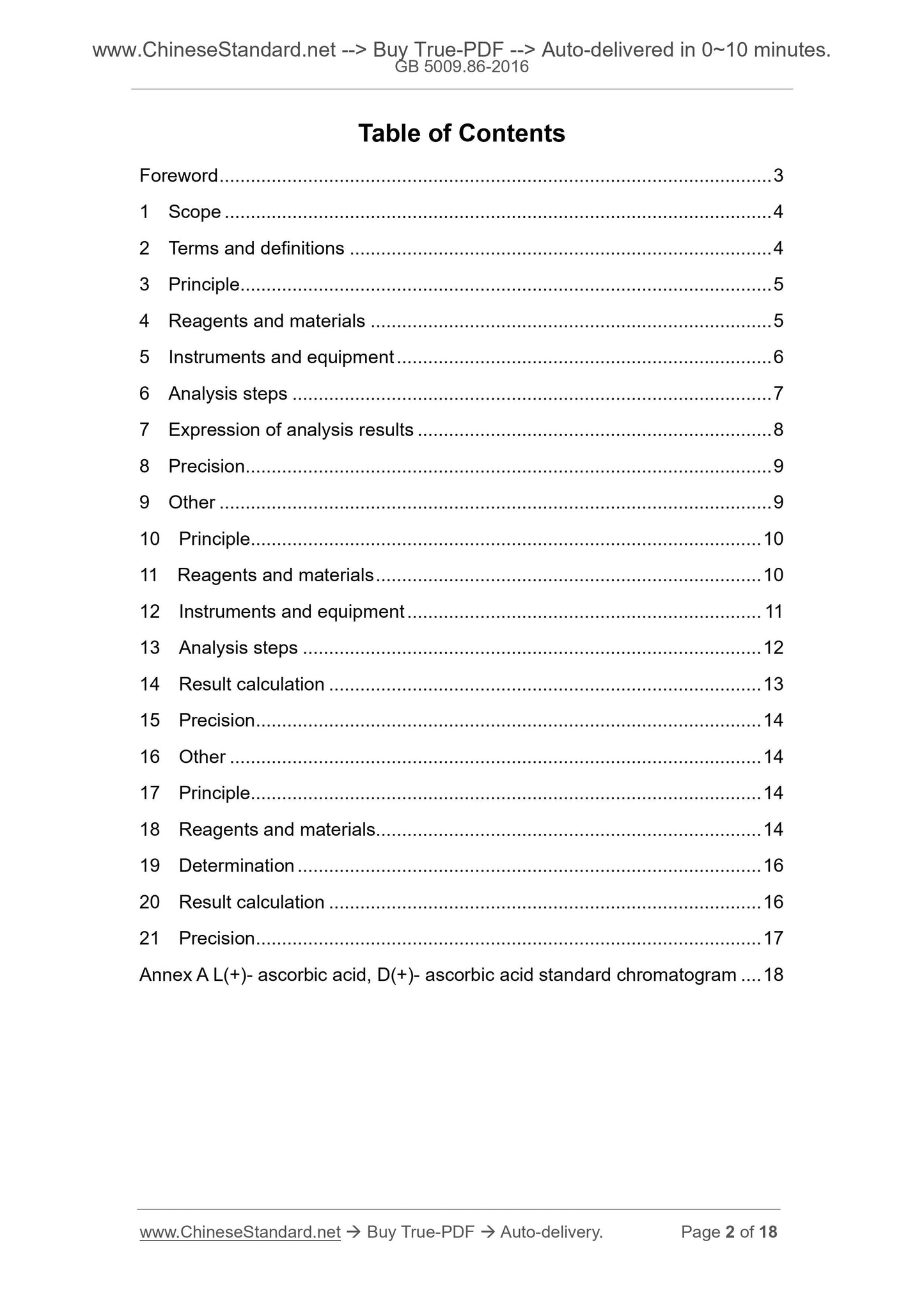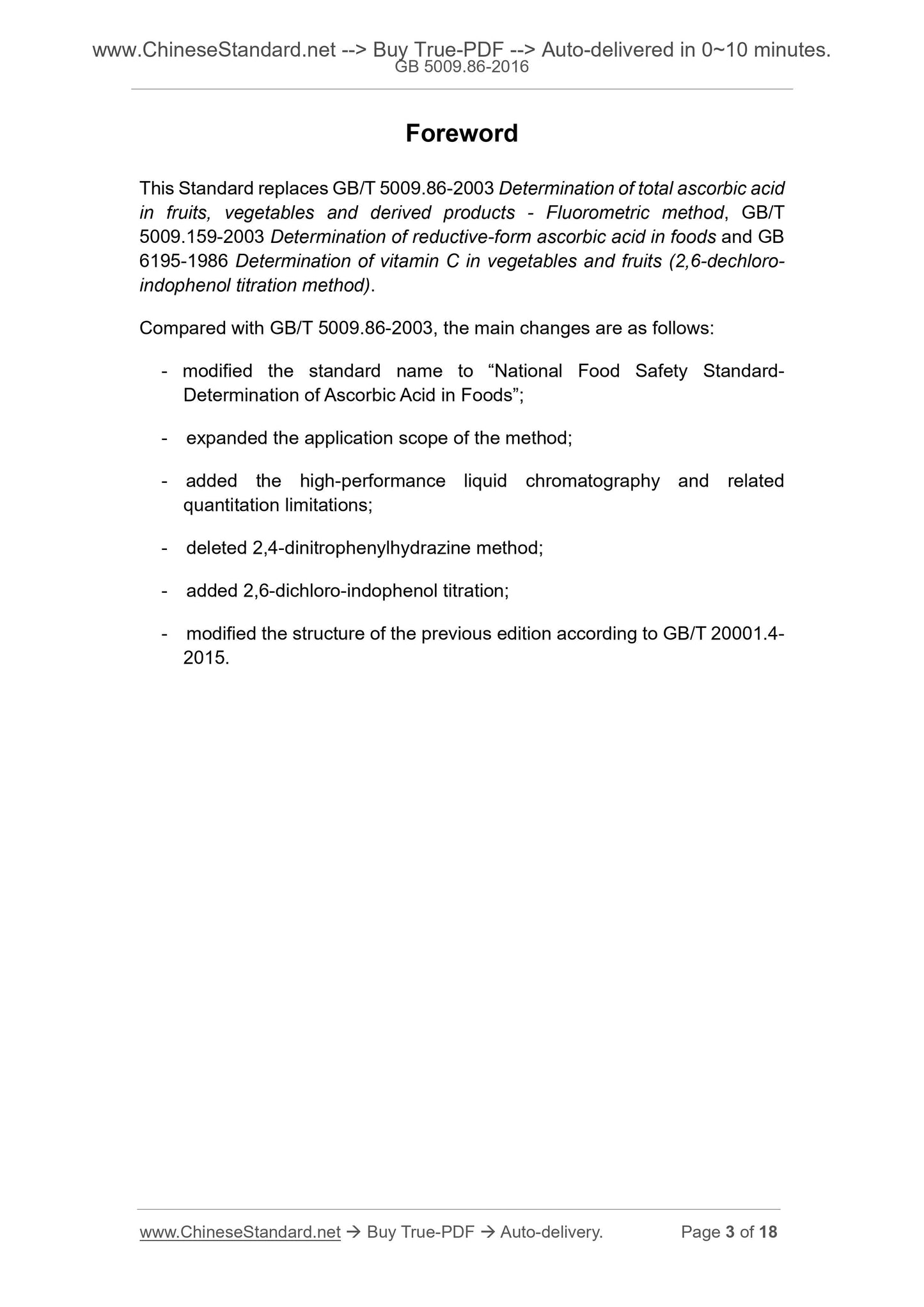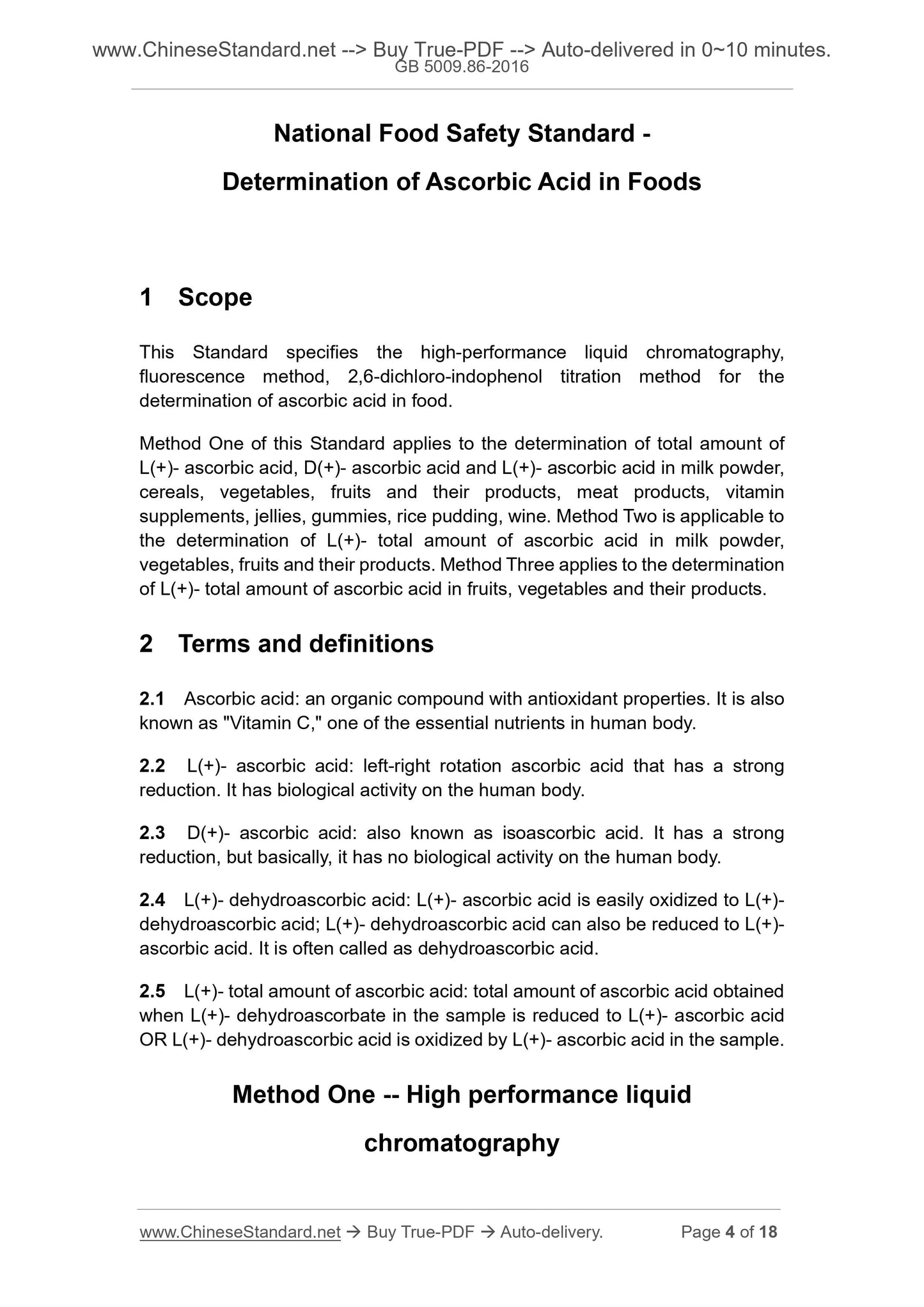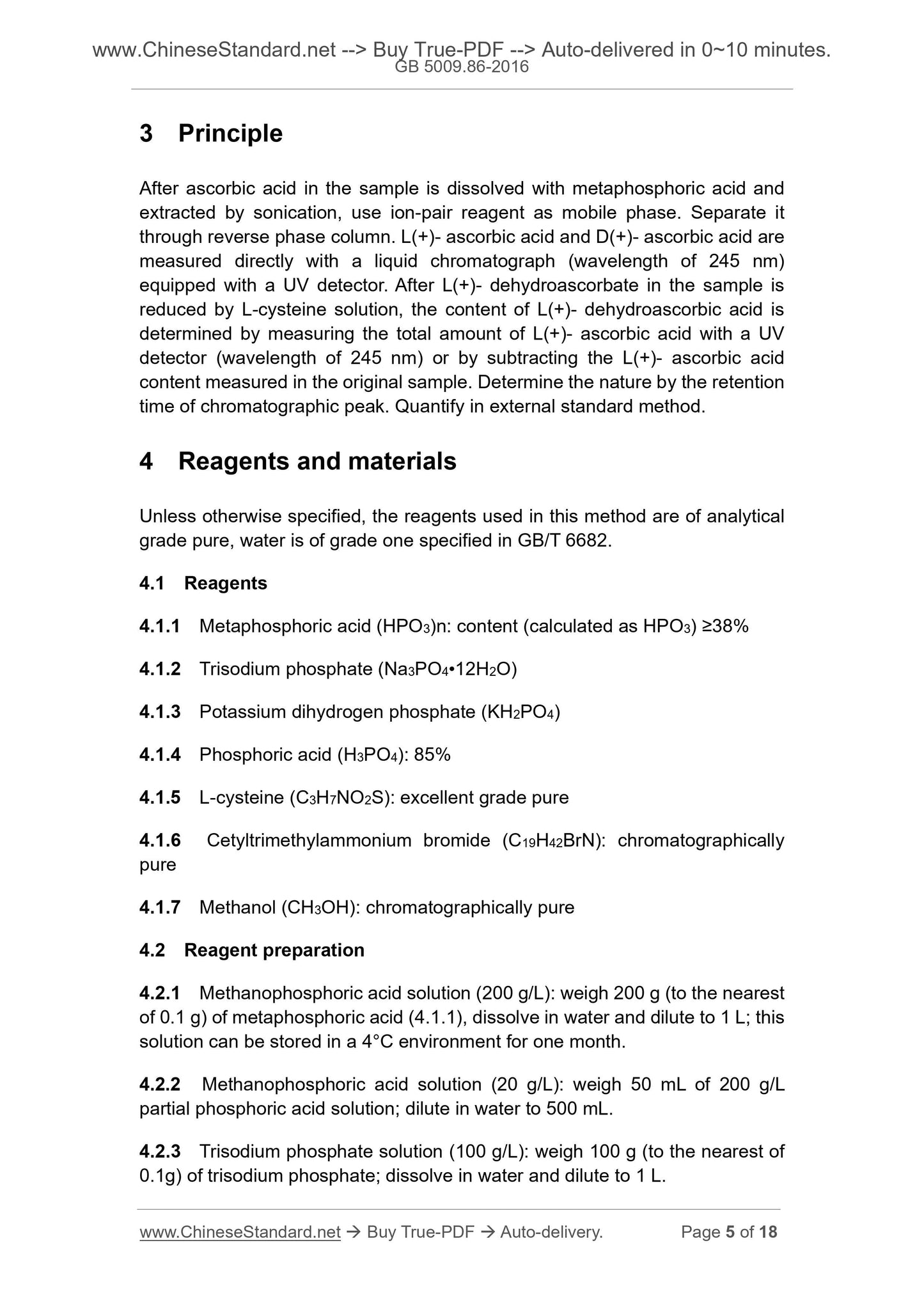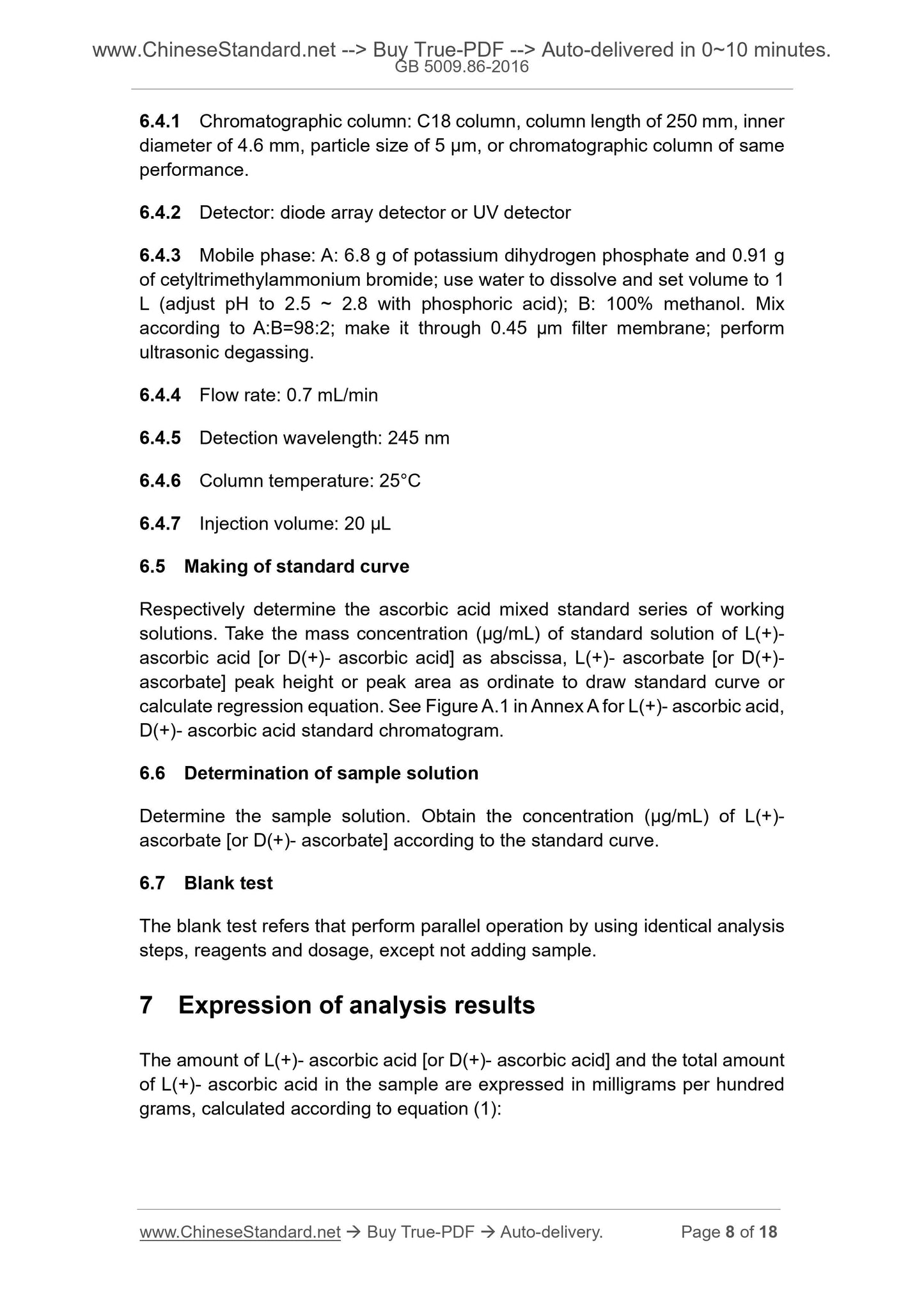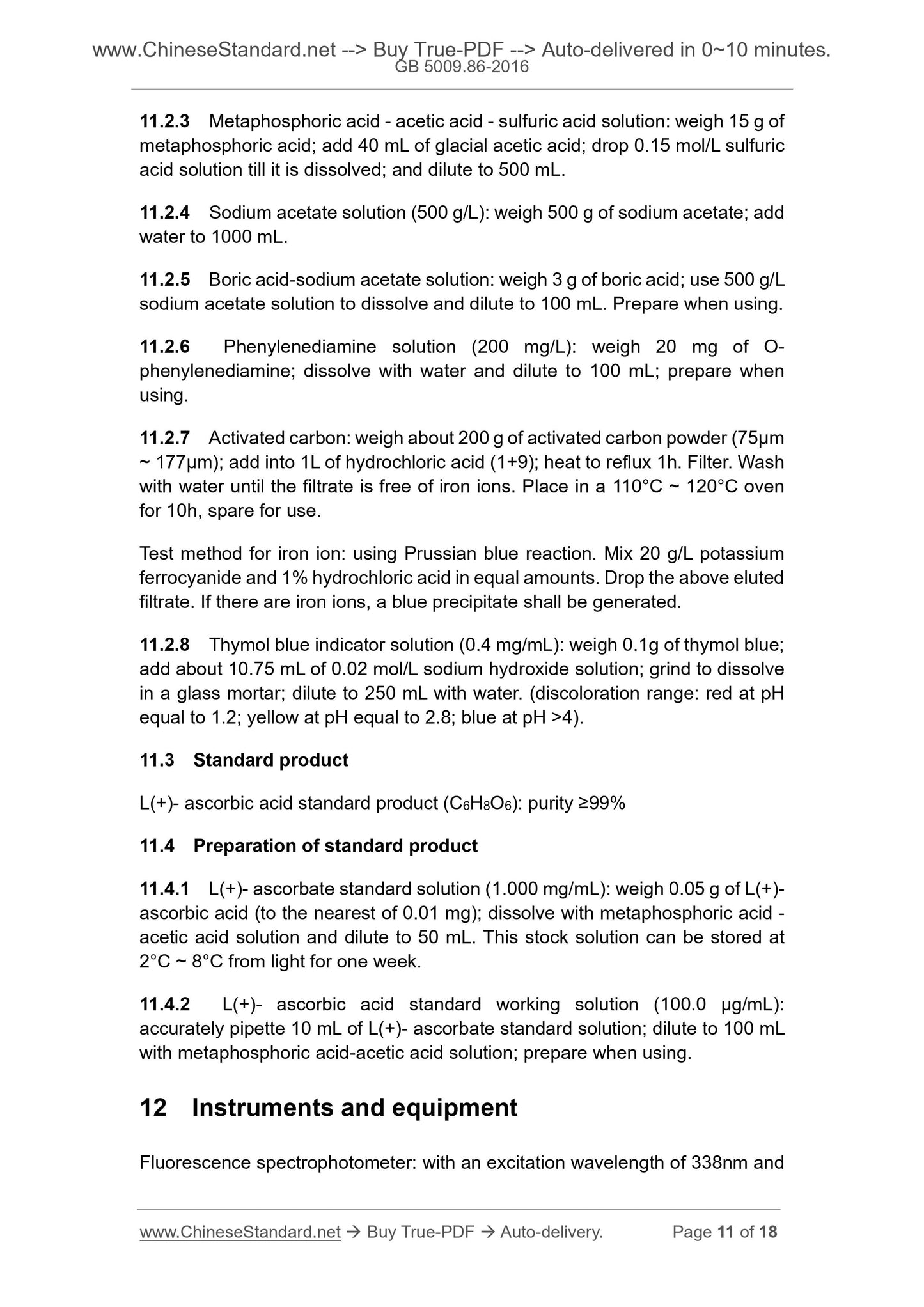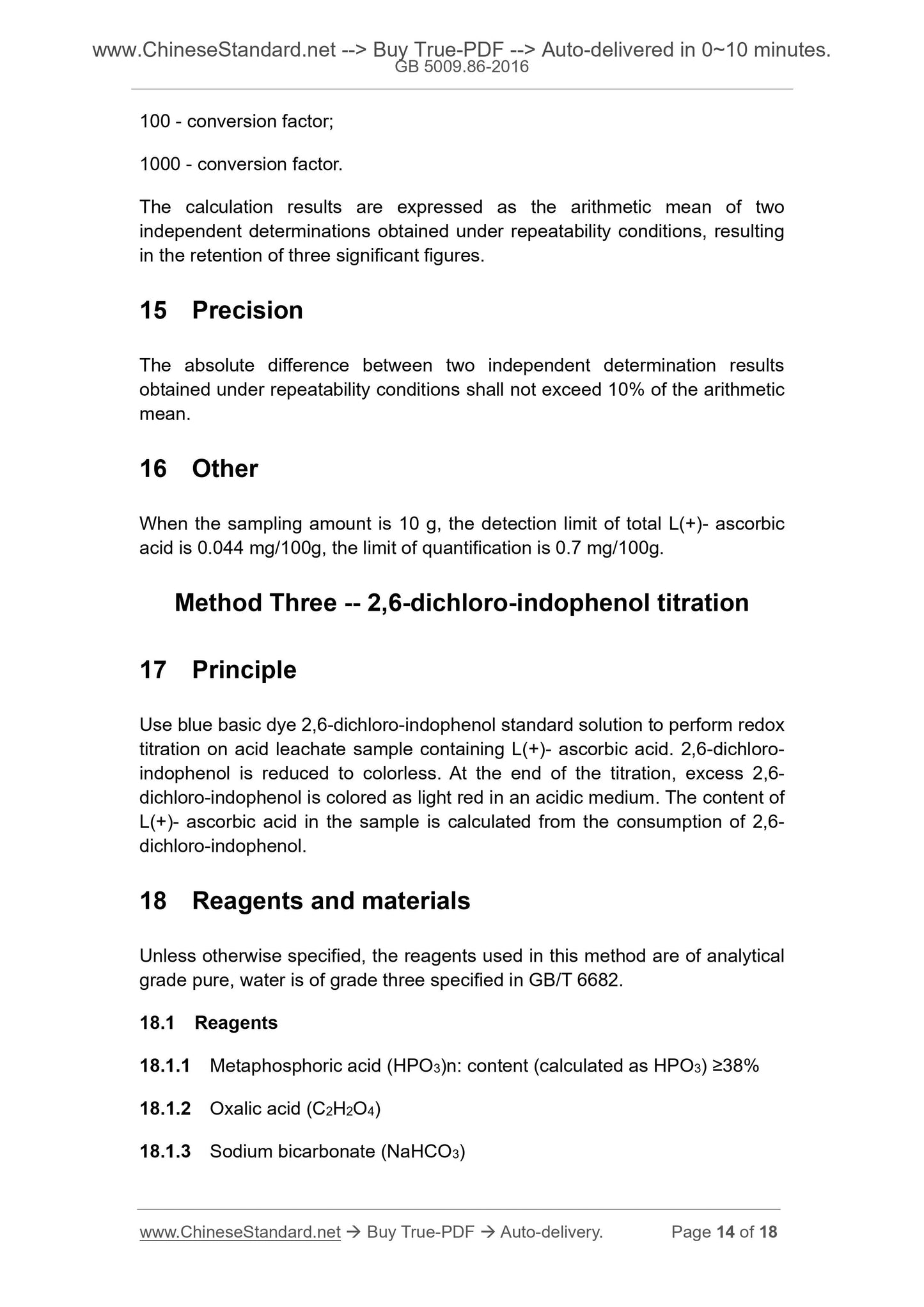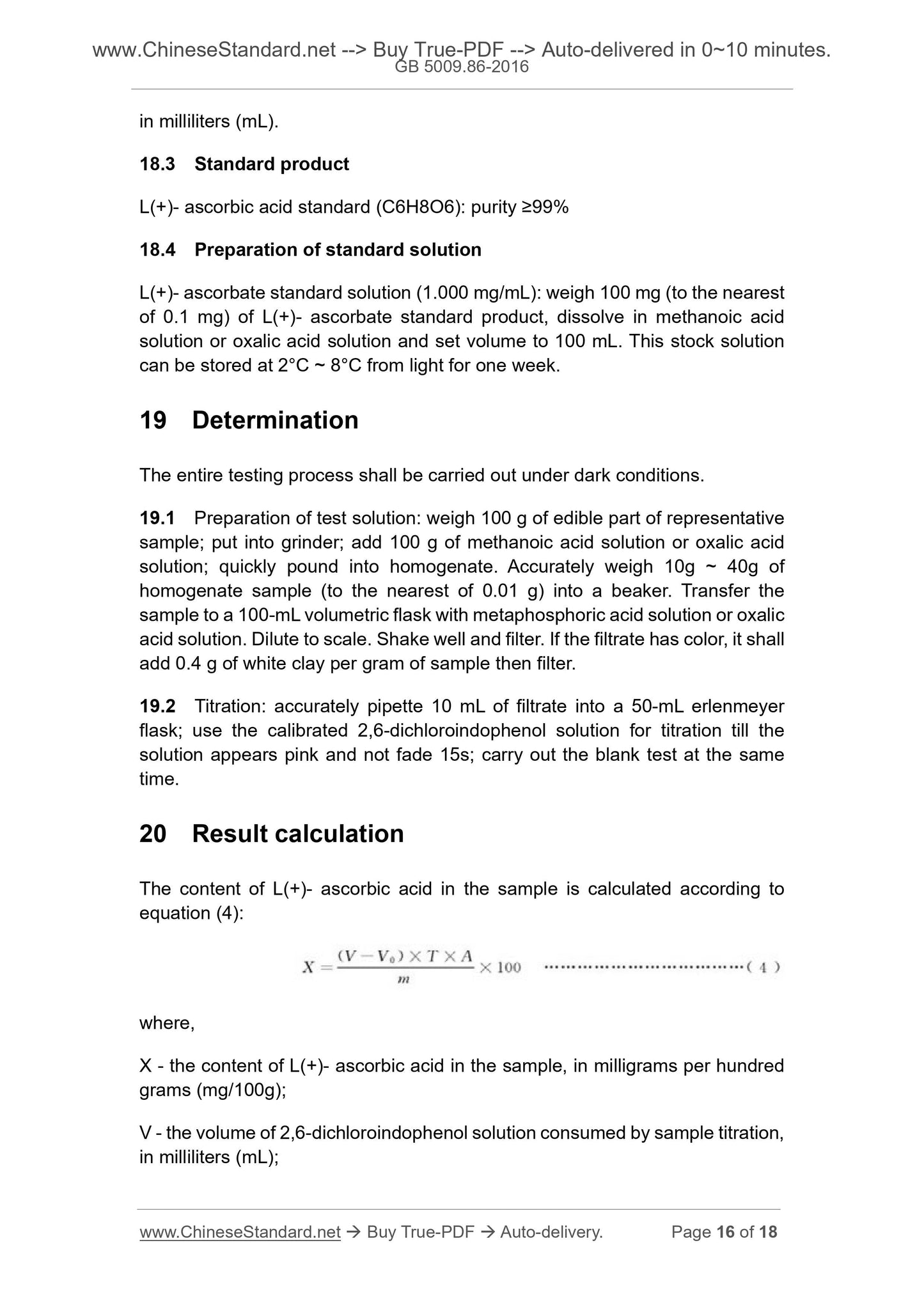1
/
of
9
www.ChineseStandard.us -- Field Test Asia Pte. Ltd.
GB 5009.86-2016 English PDF
GB 5009.86-2016 English PDF
Regular price
$115.00
Regular price
Sale price
$115.00
Unit price
/
per
Shipping calculated at checkout.
Couldn't load pickup availability
GB 5009.86-2016: National food safety standard - Determination of Ascorbic Acid in Foods
Delivery: 9 seconds. Download (and Email) true-PDF + Invoice.Get Quotation: Click GB 5009.86-2016 (Self-service in 1-minute)
Newer / historical versions: GB 5009.86-2016
Preview True-PDF
Scope
This Standard specifies the high-performance liquid chromatography,fluorescence method, 2,6-dichloro-indophenol titration method for the
determination of ascorbic acid in food.
Method One of this Standard applies to the determination of total amount of
L(+)- ascorbic acid, D(+)- ascorbic acid and L(+)- ascorbic acid in milk powder,
cereals, vegetables, fruits and their products, meat products, vitamin
supplements, jellies, gummies, rice pudding, wine. Method Two is applicable to
the determination of L(+)- total amount of ascorbic acid in milk powder,
vegetables, fruits and their products. Method Three applies to the determination
of L(+)- total amount of ascorbic acid in fruits, vegetables and their products.
Basic Data
| Standard ID | GB 5009.86-2016 (GB5009.86-2016) |
| Description (Translated English) | National food safety standard - Determination of Ascorbic Acid in Foods |
| Sector / Industry | National Standard |
| Classification of Chinese Standard | C53 |
| Word Count Estimation | 11,174 |
| Date of Issue | 2016-08-31 |
| Date of Implementation | 2017-03-01 |
| Older Standard (superseded by this standard) | GB/T 6195-1986; GB/T 5009.86-2003; GB/T 5009.159-2003 |
| Regulation (derived from) | Announcement of the State Administration of Public Health and Family Planning 2016 No.11 |
| Issuing agency(ies) | National Health and Family Planning Commission of the People's Republic of China, State Food and Drug Administration |
Share
